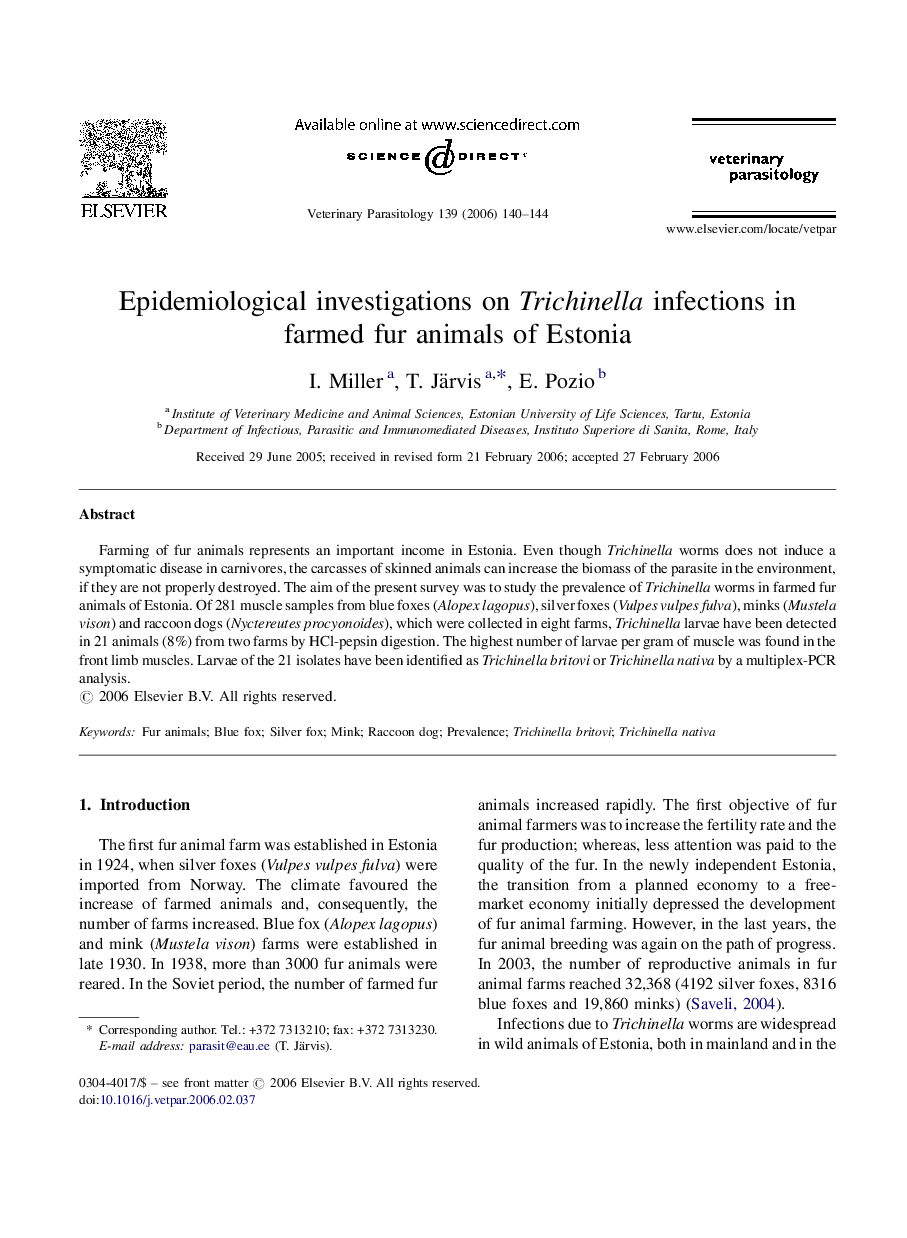| Article ID | Journal | Published Year | Pages | File Type |
|---|---|---|---|---|
| 2472485 | Veterinary Parasitology | 2006 | 5 Pages |
Farming of fur animals represents an important income in Estonia. Even though Trichinella worms does not induce a symptomatic disease in carnivores, the carcasses of skinned animals can increase the biomass of the parasite in the environment, if they are not properly destroyed. The aim of the present survey was to study the prevalence of Trichinella worms in farmed fur animals of Estonia. Of 281 muscle samples from blue foxes (Alopex lagopus), silver foxes (Vulpes vulpes fulva), minks (Mustela vison) and raccoon dogs (Nyctereutes procyonoides), which were collected in eight farms, Trichinella larvae have been detected in 21 animals (8%) from two farms by HCl-pepsin digestion. The highest number of larvae per gram of muscle was found in the front limb muscles. Larvae of the 21 isolates have been identified as Trichinella britovi or Trichinella nativa by a multiplex-PCR analysis.
